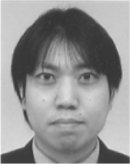|
Plenary Lecture
Suitable Methods of Dynamic System Identification in the
Arterial Baroreceptor Reflex

Dr. Koji Kashihara
Researcher
Graduate School of Information Science
Nagoya University
Furo-cho, Chikusa-ku, Nagoya
464-8601, Japan
E-mail:
kashihara@cog.human.nagoya-u.ac.jp
Abstract:
Because of the stabilization of arterial pressure
against external pressure disturbances, arterial
baroreceptor reflex is an important negative feedback
system. The assessment of the baroreflex function would
require quantifying not only the dynamic but also static
properties because the baroreflex sensitivity might be
quickly changed during cardiovascular diseases. The
time-domain analysis has evaluated the stable gains
around the operating point, but might not accurately
characterize the dynamic baroreflex properties with
unstable hemodynamics and background noise. The FFT
analysis in the frequency domain has identified dynamic
properties under noisy conditions, requiring longer data
segments to remove the noise and to evaluate the
properties with low-frequency band. To evaluate the
time-varying gain around the operating point, the
spontaneous baroreflex method has adjusted the time
window in the short-time FFT; however it might not be
suitable for the evaluation of short-term changes in
baroreflex properties, at multiple pressure points with
noise. In contrast, a modified wavelet-based
time-frequency analysis could identify the dynamic
baroreflex property from the transient step pressure
inputs, because of high temporal resolution.
Brief Biography of the Speaker:
Koji Kashihara received PhD (Eng.) degree in 2001 from
Tokyo Institute of Technology. He belonged to National
Cardiovascular Center Research Institute, RIKEN,
University of Sydney, etc. He is currently a researcher
at Nagoya University. His research interests are human
brain activities and autonomic nervous system.
|